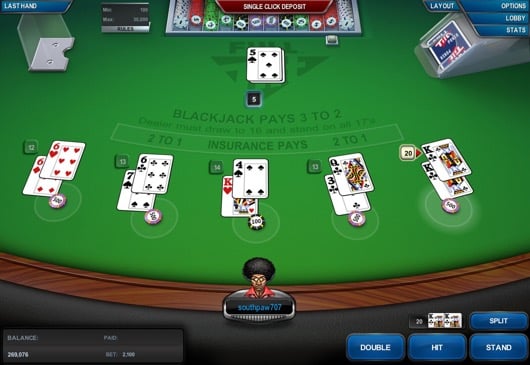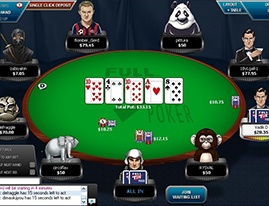Full Tilt Poker Term
Full Tilt is the home of The Deal. Just one five-card hand can unlock a wealth of prizes, including a 50% share of the hefty progressive jackpot. Pull up a seat today and find out what the cards have in store for you. Tilt is the term used to describe being angry while at the poker table. A tilted player often makes questionable decisions since intense emotion has the ability to shut down the more rational side of our brain. Full Tilt Poker allowed players to gamble with - and lose to other players - this phantom money that Full Tilt Poker never actually collected or possessed. 'When other players won these phantom funds, their accounts were credited with money that Full Tilt Poker did not actually possess, but now nevertheless owed to these players.
Full Tilt Poker Terms
Also found in: Dictionary, Thesaurus, Medical, Encyclopedia, Wikipedia.
(at) full tilt
(at) full tilt
with maximum energy or force; at top speed.(at) full ˈpelt/ˈspeed/ˈtilt
with great speed, force, etc: The police were chasing him so he ran full pelt down the road. ♢ We drove down the road at full tilt.Full Tilt Poker Texas Holdem
Want to thank TFD for its existence? Tell a friend about us, add a link to this page, or visit the webmaster's page for free fun content.
Full Tilt Poker Mac
Link to this page:

Since it opened in June 2004, Full Tilt has been the online poker site of choice for thousands of budding poker players and professionals alike. Its excellent software, vibrant graphics, and innovative games made it extremely popular with players around the world.

When it first launched, Full Tilt Poker US customers were welcomed with open arms and they flocked to the site in droves for the reasons stated above, but also because the company was fronted by the likes of Howard Lederer, Chris “Jesus” Ferguson, Mike Matusow, and Phil Ivey, all of whom had become household names due to televised poker shows.
At Full Tilt Poker, USA residents could do exactly what the sites tagline suggested, “Learn, Chat and Play with the Pros,” and they did in massive numbers, helping to propel Full Tilt to second place in terms of real money cash game players, trailing only the mighty PokerStars in regards to traffic. Business was booming, tournament prize pools were swelling, and everything was rosy.
Then came what is known in the poker industry as “Black Friday.” Aptly, on Friday 13 October, 2006, the Unlawful Internet Gambling Enforcement Act of 2006 (UIEGA) came into force, which essentially made it illegal for banks and other financial institutions to process payments to gambling websites offering their services to residents of the United States.
While some online poker sites, such as partypoker, immediately withdrew from the U.S, others like PokerStars and Full Tilt continued to operate on American soil. It was a decision that paid off handsomely for PokerStars, but it was the beginning of the end for Full Tilt.
Poker sites had to be creative in order to process payments, thinking outside of the box for ways to have their players deposit and withdraw funds from the site. Unfortunately for Full Tilt Poker, US payment providers proved troublesome, which combined with some serious mismanagement by Full Tilt’s backroom staff, resulted in a huge black hole of funds.
Full Tilt continued to credit players’ account with the amounts they had attempted to deposit, but sometimes never received those funds from the payment provider. Its management team continued to do this for quite a length of time until the problem came to light and a figure of $300 million in “lost” funds was made public. This $300 million figure was what the American Department of Justice (DOJ) claimed Full Tilt had defrauded out of its customers, although former owner Chris Ferguson’s lawyer suggested the issue was most likely the result of mismanagement and not malice.
After the wheels fell off Full Tilt Poker, USA customers could no longer play on the once thriving site, in fact nobody could because Full Tilt was taken offline, seemingly lost forever, along with hundreds of millions of Full Tilt customers’ money.
US Players And Full Tilt Poker In 2015
Full Tilt Poker Meaning
This remained the case until July 2012 when the DOJ and PokerStars reached an agreement that saw PokerStars pay the DOJ $225 million up front and a total of $547 million. PokerStars also made $184 million available to refund all non-U.S. players within 90-days of signing the deal. Full Tilt Poker US customers are still to this day receiving their fund back from the DOJ, despite PokerStars making their balances available immediately.

On Tuesday 6 November, 2012, Full Tilt relaunched its real money operations, although Full Tilt USA was no more, the door slammed shut on them, just as it had for PokerStars’ American customers.
To this day, Full Tilt Poker US operations are non-existent, but that could be all set to change because PokerStars reentered the U.S. market on Wednesday 16 March, 2016 with a soft-launch, albeit only in the state of New Jersey. PokerStars has spent heavily in lobbying for other states to allow online poker, which if successful, could open the gates for a return of Full Tilt Poker US.
However, a full return of the original Full Tilt USA friendly site is actually unlikely because in February 2016, PokerStars announced its intentions to merge Full Tilt and PokerStars traffic during the Spring of 2016.
Although Full Tilt Poker US is no more, there are a number of alternatives for Americans wanting to play online poker in the USA. Currently, players can choose to head to 888poker, partypoker, PokerStars, and WSOP when they are in New Jersey, or WSOP.com when in the state of Nevada.
In short, Americans cannot play at Full Tilt unless they are prepared to move to a country where Full Tilt currently operates.